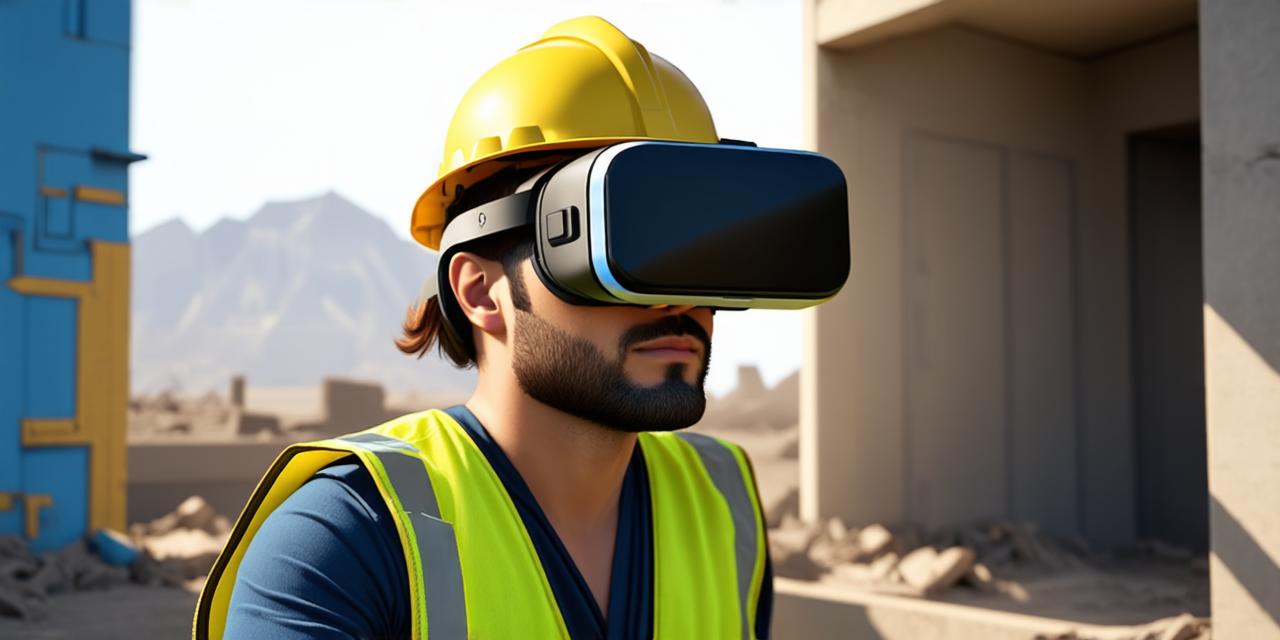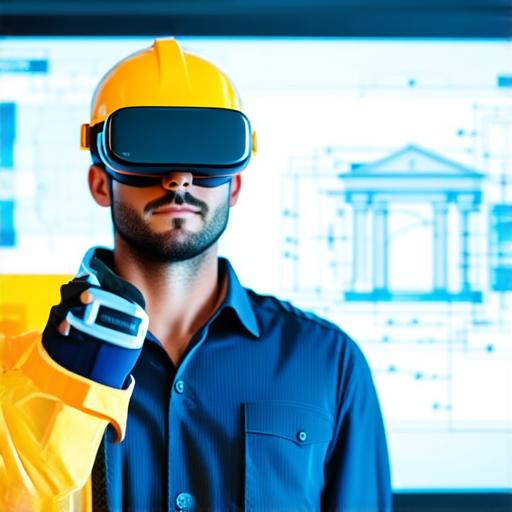
How can the construction industry utilize virtual reality?
The use of virtual reality (VR) in construction is a relatively new concept that has gained significant attention in recent years.
Virtual reality refers to the ability to create and experience a digital representation of a physical space or object, allowing individuals to visualize and interact with it as if it were real. In the context of construction, VR can be used for various purposes, including design, visualization, training, and collaboration.
Real-Life Examples of Virtual Reality in Construction
Many companies are already using virtual reality technology to enhance their construction processes. One such company is Bechtel, a multinational engineering and construction firm that has been using VR for several years. Bechtel uses VR to create 3D models of power plants and other complex structures, allowing workers to visualize the project before it begins. This technology also allows for more accurate planning and helps to reduce errors during construction.
Another company that is using virtual reality in construction is Autodesk, a software company that specializes in design and engineering solutions. Autodesk has developed VR software called “BIM 360,” which allows architects and engineers to collaborate on projects in real-time. This technology has been used on several large-scale construction projects, including the construction of the Burj Khalifa in Dubai.
Virtual Reality in Construction: The Future
The use of virtual reality in construction is expected to continue growing in the coming years. As technology improves and becomes more affordable, more companies are likely to adopt this technology to enhance their processes. In addition, as VR continues to evolve, it will likely become even more immersive and interactive, making it an even more valuable tool for visualizing and planning construction projects.
Virtual Reality in Construction: The Benefits
One of the main benefits of using virtual reality in construction is that it allows for more accurate and efficient planning. With VR, architects can create 3D models of buildings and structures, which can be easily modified and adjusted as needed. This eliminates the need for physical models, which are time-consuming to make and can lead to errors.
Virtual reality also offers an immersive experience that allows contractors and builders to visualize a project in real-time. This makes it easier to identify potential problems and make adjustments before they become major issues. Additionally, virtual reality can be used for training purposes, allowing workers to practice their skills in a safe and controlled environment.
Virtual Reality in Construction: The Challenges
While the use of virtual reality in construction has numerous benefits, there are also several challenges that need to be addressed. One of the main challenges is the cost of VR technology, which can be expensive for small and medium-sized businesses.
Another challenge is ensuring that the virtual environment accurately represents the real-world environment, including factors such as lighting, materials, and textures. This requires a significant amount of expertise and experience in construction design and engineering.
Finally, there is a risk that virtual reality technology could lead to a disconnect between designers and builders, with each group working in their own separate virtual environments without effective communication. To address this challenge, it is important for architects, engineers, and contractors to work together and collaborate effectively throughout the design and construction process.
Virtual Reality in Construction: The Implications

The use of virtual reality in construction has significant implications for the future of the industry. As technology continues to evolve, we can expect to see more innovative uses of VR in construction, including the development of new tools and techniques for visualizing and planning projects.
One area where virtual reality is expected to have a significant impact is in the design phase of construction projects. With VR, architects and designers can create realistic simulations of their designs, allowing them to make changes and adjustments as needed. This will help to reduce the number of design errors and ensure that projects are completed on time and within budget.
Another area where virtual reality is expected to have a significant impact is in the training phase of construction projects. With VR, workers can practice their skills in a safe and controlled environment, allowing them to become more proficient and confident in their abilities. This will help to reduce accidents on job sites and ensure that workers are better equipped to handle complex tasks.
Virtual Reality in Construction: The Future of the Industry
The use of virtual reality in construction represents a significant shift in the way that projects are planned and executed. As technology continues to evolve, we can expect to see more innovative uses of VR in construction, including the development of new tools and techniques for visualizing and planning projects.
In order to fully realize the benefits of virtual reality in construction, it is important for architects, engineers, contractors, and other stakeholders to work together and collaborate effectively throughout the design and construction process. By doing so, we can create more efficient, cost-effective, and sustainable construction projects that meet the needs of today’s world.


